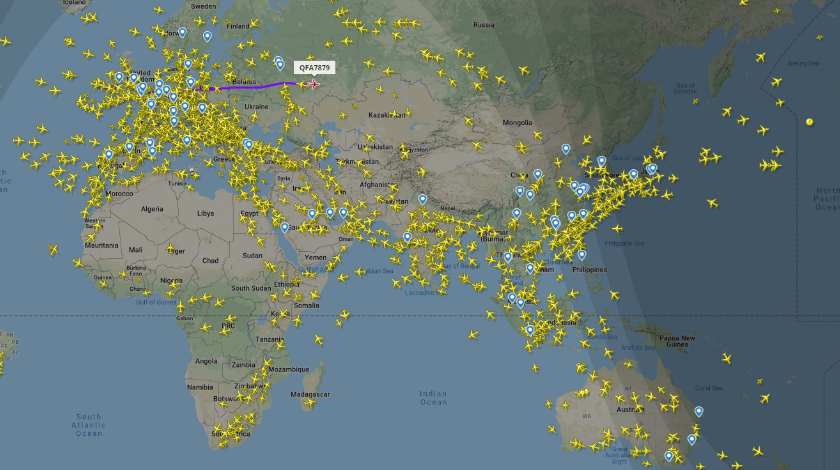Photo: Qantas
Reading Time: 2 minutesQantas Boeing 787-9 (QF7879) has already taken off for the second test of the world’s longest commercial flight. The first test flight was operated last month from New York to Sydney, this time Qantas is on the London – Sydney route.
Both flights, and the third which is to be done in December, are operated as a part of “Project Sunrise” research aimed at reduction of jetlag and design optimum crew rest and work pattern.
In October it took 19 hours and 16 minutes for the Boeing 787-9 Dreamliner with a total of 49 passengers and crew to take off in New York and successfully land in Sydney without a single stop. According to Qantas, “it cut around three hours off the typical gate-to-gate travel time of current one-stop flights”.
Therefore, the second research flight is also expected to carry nearly 50 passengers and crew “to give the 787-9 the range required for the 17,800 km flight”. The flight is expected to take 19 hours and 30 minutes.
The route will depart London and overfly 11 countries including England, Netherlands, Germany, Poland, Belarus, Russia, Kazakhstan, China, Philippines and Indonesia before crossing the Australian coast near Darwin, tracking across the country before descending into Sydney.

Qantas Repeats History
The current test flight is the second in history when commercial air carrier operates directly between the two cities. The first was 30 years ago in 1989, when also Qantas operated a 747-400 ferry flight between the two cities. The aircraft that performed that flight (VH-OJA) is now on public display at an aviation museum, south of Sydney.
Nevertheless, Qantas first started flying between London and Sydney in 1947, but it took five days and six stops.
Finally, this London – Sydney flight marks not only further progress of the “Project Sunrise” but also almost the centenary of the first flight from the UK to Australia in 1919. It took off from Hounslow Heath (near today’s Heathrow Airport) on 12 November and landed in Darwin 28 days later on 10 December 1919.

